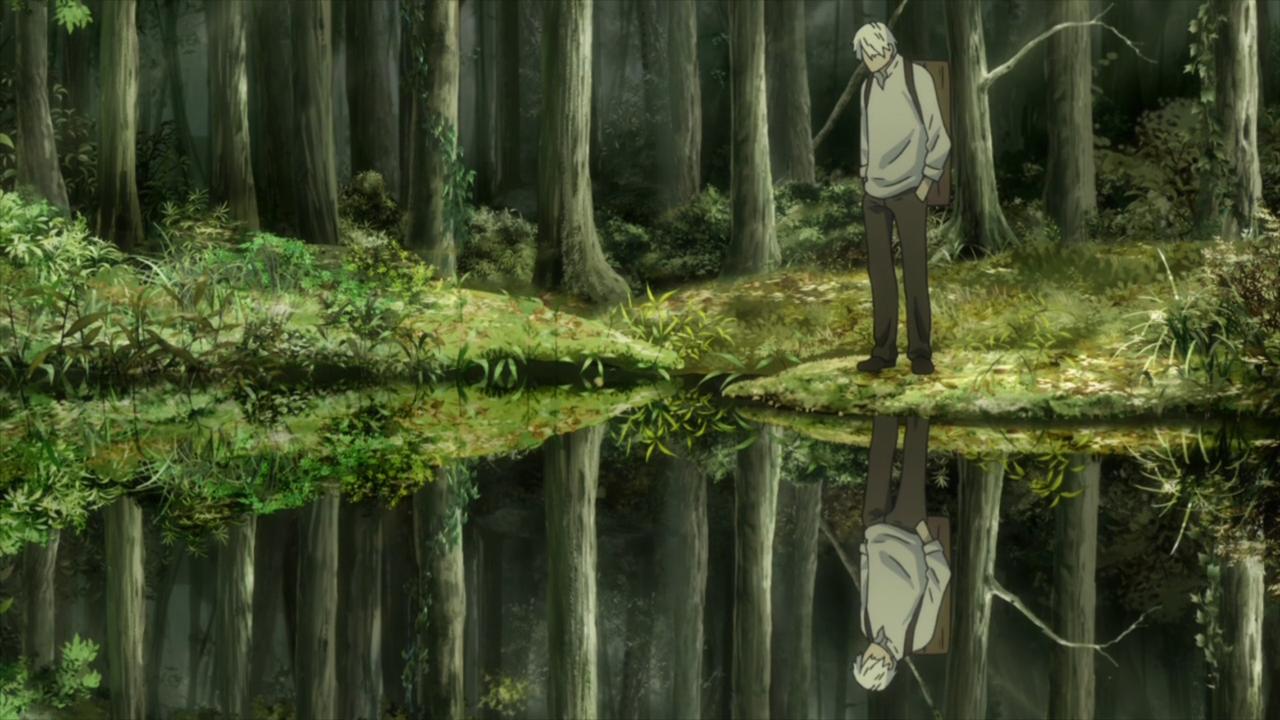Anime Adaptations of Manga, LNs, and Novels
We’ve all heard of them (hell, we’ve all been them) – the annoying manga reader whining about what anime has done to their precious favorite series. And let’s face it. The anime roadside is littered with the corpses of series with incomplete adaptations, original endings, and nonsensical plotlines. Manga and anime are very different things (and never mind novels), and it can be a lot harder to successfully translate the former to the latter than most people think.
 It’s not all gloom and doom, though. Difficulties aside, manga remains the largest wellspring of good anime by far, seeing as how original series are relatively rare, and very few LN give rise to exceptional anime, most of them content to play it safe and target a well-defined sector of the otaku fandom. When great anime happen, the odds are pretty good that they were based on a manga. Novels, on the other hand, have few anime adaptations available, but the percentage of anime based on novels that go on to be good or excellent is higher than with any other source material.
It’s not all gloom and doom, though. Difficulties aside, manga remains the largest wellspring of good anime by far, seeing as how original series are relatively rare, and very few LN give rise to exceptional anime, most of them content to play it safe and target a well-defined sector of the otaku fandom. When great anime happen, the odds are pretty good that they were based on a manga. Novels, on the other hand, have few anime adaptations available, but the percentage of anime based on novels that go on to be good or excellent is higher than with any other source material.
And although a lot of manga purists refuse to admit it, there are rare instances where anime adaptations aren't just good, they're superb, even better than the original. They use capabilities of the medium to build on what the source material created, or rearrange events to induce a better flow, even, on occasion, correcting mistakes, given the benefit of hindsight taking the story in a direction that actually makes more sense than the original did. Miracles do happen. Here are a few examples of anime adaptations that upped the ante.
All ranking information was taken on the date of publication.
Nazo no Kanojo X (Mysterious Girlfriend X)
MAL Rated 7.41, Ranked #1877 | Aired Spring 2012 | Produced by Hoods Entertainment

Ueshiba Riichi’s manga is a strange one by any standard – the story of a boy and a girl whose drool has mystical powers. It would have made a tough translation to anime under any circumstances, but when you consider that Hoods only had 12 episodes to cover a long and ongoing manga, director Watanabe Ayumu (the “other” great director named Watanabe) had a pretty thankless job on his hands. The job he did was all the more remarkable given that he was directing Uchuu Kyoudai at the same time, and one could hardly imagine two series more different in tone.
In this instance, the improvement over the source material was achieved mainly though the choices Watanabe made in terms of material. He picked and chose chapters from much later in the story to intersperse with earlier material, and in doing so created a flowing and cohesive story with a definitive but still open-ended conclusion. He also made bold casting choices (female lead – and OP and ED singer – Yoshitani Ayako had never worked as a seiyuu before), and incorporated a determinedly ’80s visual style that gave the anime a signature and unmistakable look.
Watashi ga Motenai no wa Dou Kangaetemo Omaera ga Warui! (WataMote)
MAL Rated 7.33, Ranked #2172 | Aired Summer 2013 | Produced by Silver Link.

Just because an anime improves on a manga doesn’t mean the source material wasn’t great to begin with, and Watamote is certainly a great (if very difficult) manga. It’s just that anime is a much more immediate, visceral medium. And when you see Tomoko as a moving, speaking girl rather than an image on a page, her agony is that much more gut-wrenching.
That’s especially true when you have a performance like the one delivered by Kitta Izumi, which was for my money one of the best in recent memory. Tomoko is a strange character, a wholly obnoxious and self-obsessed woman-child who’s nevertheless totally heartbreaking, and Izumi captures both sides of this little girl lost perfectly. Director Oonuma Shin also peppers the anime with creative and captivating touches, like the lead-in to the OP in Episode 10.
Seirei no Moribito (Moribito - Guardian of the Spirit)
MAL Rated 8.25, Ranked #255 | Aired Spring 2007 | Produced by Production I.G

Novelist Uehashi Nahoko’s “Moribito” series is sometimes referred to as the “Harry Potter of Japan” due to its massive popularity. So in saying that Kamiyama Kenji’s anime for Production I.G. was superior, it’s no disrespect to the source novels, the first two of which were published in English-language editions. Uehashi, a sociologist by trade, is widely respected as one of the best young adult fiction novelists in Japan.
However, Kamiyama expanded on Uehashi’s work in several meaningful ways. With an older target audience, he made the story grittier and more realistic, focusing more on the complicated politics and social issues in the Yogo Empire. He also utilized the tools anime offers that manga simply cannot, and delivered arguably (I would certainly argue it) the most beautifully drawn and animated TV ever up to that point. He also hired Kawai Kenji to compose the music, and the brilliant Kawai delivered a soundtrack that enhanced the experience profoundly. The spirit of the novels remains intact – the anime simply made everything about the series that much better.
Dagashi Kashi
MAL Rated 6.87, Ranked #3737 | Winter 2016 | Produced by feel.

Just finished airing, this one is a somewhat contentious choice. I’ve seen a lot of manga readers complain that the anime made too many changes to the source material, but I believe those changes were a necessary function of the transition from manga to anime – and illustrate how different those two mediums are.
Dagashi Kashi is a very funny manga, but it’s almost entirely composed of Hotaru’s slapstick antics, discourses on dagashi, and tests of knowledge with Kokonotsu. Could that have sustained a full-length anime for 12 episodes? Not in my view, and that’s why I was rather glad to see director Takayanagi Shigehito make the changes he did. He increased the role of both of Kokonotsu's childhood friends, Tou and Saya (especially Saya), and played up the romance element in a very understated way. In doing so he gave the series the structure it needed to make the jump to anime successfully.
Mushishi
MAL Rated 8.78, Ranked #29 | Aired Fall 2005 | Produced by Artland

Here’s another example of a source material that could hardly be more accomplished than it is – Urushibara Yuki’s manga is widely considered to be one of the finest in the modern era. So does the fact that the anime is even more sublime suggest that anime at its very best surpasses manga at its very best, as an art form?
That might be the subject of another article, but Mushishi does provide another example of what anime makes possible in the right hands. For me, Nagahama Hiroshi’s anime is the quintessential example of an adaptation that captured everything that’s magical about the source material in a totally faithful way, yet isn’t afraid to enhance it using the medium at hand. Masuda Toshio’s music could hardly suit the material better, and the casting is a factor that cannot be overlooked – Nagahama used non-seiyuu actors almost exclusively, including children in the (often crucial) child roles. He also shifted the chapter order in Zoku Shou to give the ending even more poetry and grace.
Minami-ke
MAL Rated 7.84, Ranked #769 | Aired Fall 2007 | Produced by Daume

This is a different sort of case than the other titles on this list, but I view it as the most striking example of an entire class of “better than the original” adaptations born from gag manga (often 4-koma, though Minami-ke is not technically one of those). I love a good gag manga, but the structure – intro, setup, punchline, repeat – doesn’t lend itself especially well to full-length anime form.
That’s where shows like Minami-ke come in. The first and best season was directed by comedy guru Ohta Masahiko, and what he did was quite simple: he fleshed out the jokes. He kept the punchlines intact but built original stories around them, and in the process made the characters much more distinctive and three-dimensional. And of course, Minami-ke specifically is another example of the way music and seiyuu performances can really take a series to another level, this time comedically.
Hunter x Hunter (2011)
MAL Rated 9.14, Ranked #5 | Aired Fall 2011 | Produced by Madhouse

We close with one of the finest anime of the modern era, based on arguably (I would argue it) the greatest shounen manga of the modern era. In a sense, including this series is a bit of a cheat because the anime adaptation by Madhouse had so many advantages over the manga. Togashi Yoshiro’s many hiatuses are well-chronicled (by me as well as generally), but they’re highly relevant here. Eliminating those long waits after cliffhangers (especially in the "Chimera Ant" arc) alone lift the anime above the manga for most fans.
There’s more going on here than just liberating H x H from hiatuses and Togashi’s occasional scruffy artwork, though. Madhouse absolutely killed it with the adaptation. They crammed a preposterous amount of sakuga animation into it, did a brilliant job with casting, and generally treated the series with an air of respect and love. The cherry on top is the way director Koujina Hiroshi chose to adapt the seemingly impossible-to-adapt “Chimera Ant”. With its heavy reliance on narration and entire episode’s worth of material covering only a few seconds of real time, not to mention extended stretches ignoring the main cast altogether, "Chimera" is a nightmare to adapt – but Madhouse did it, and did it brilliantly. They turned the greatest shounen manga of the age into the greatest shounen anime ever, even better than the original.



